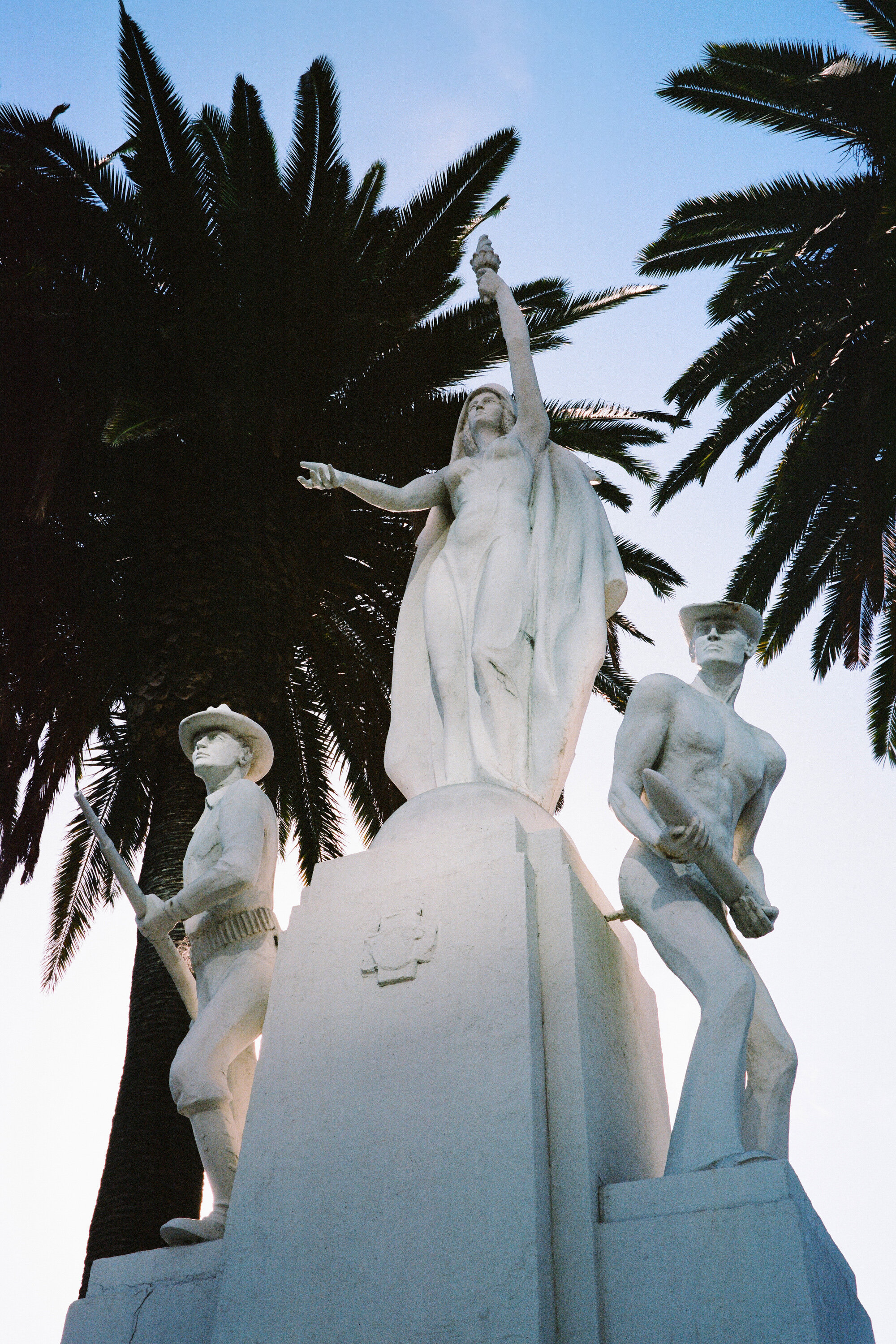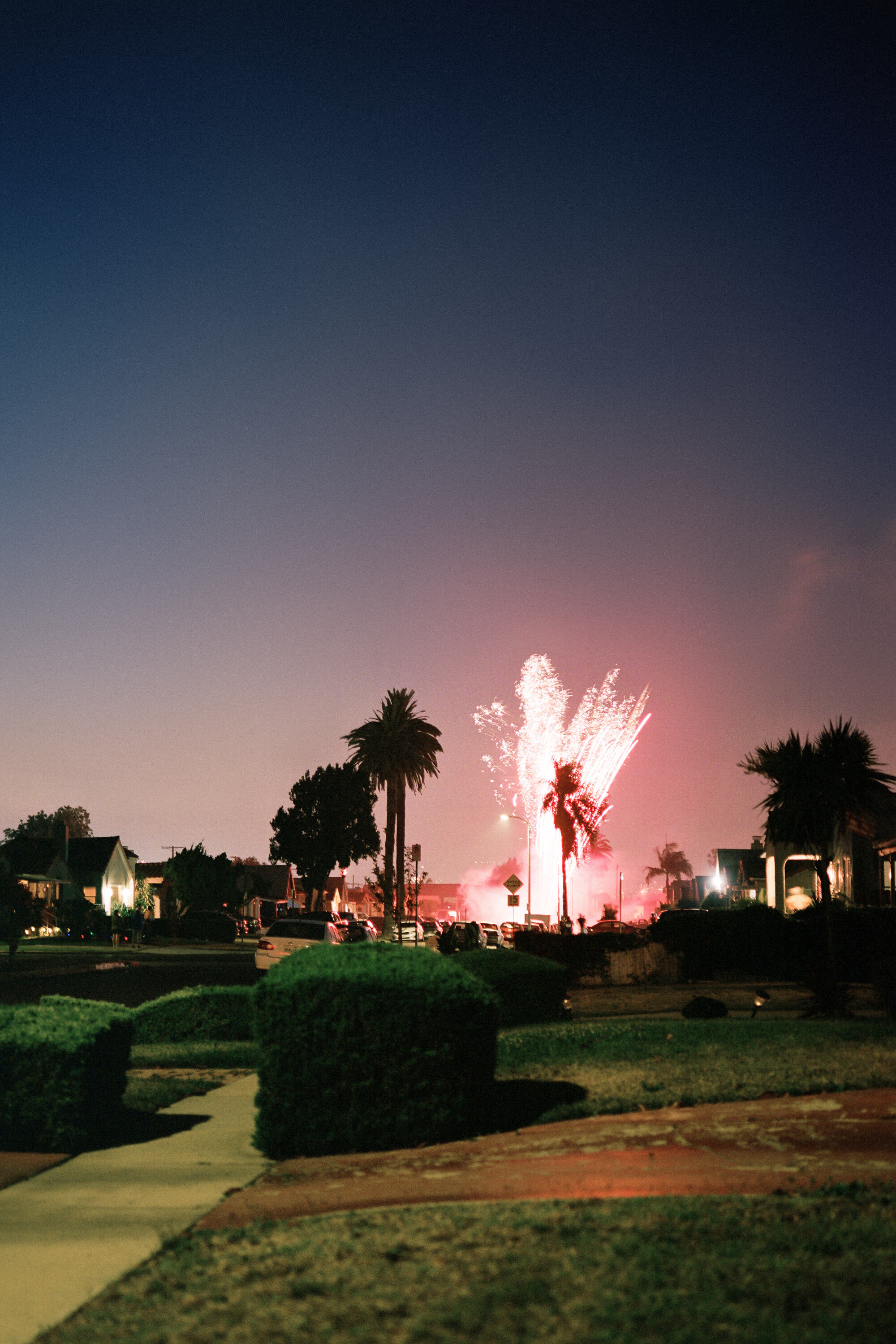An Unwavering Tendency Toward the Center of a Blistering Sun
Company Gallery, New York
September 16 – October 21, 2018











An unwavering tendency toward the center of a blistering sun. The name of the exhibition summoned in my mind all the times the sun touched my eyes, or rather when my eyes were seduced by the sun’s touch: eclipses, sunrises. Only as those moments waned did I register just how much I had looked directly into it and how exhausted it made my eyes. The feeling builds up, the feeling of having light burned into the visible plane and light preventing perception of anything else but it, in unreal imperceptible colors like pale blues and purples and oranges. But sometimes there are astronomical events and blissful sights that are worth the risk.
I often think of EJ Hill’s work in celestial terms. He manages to balance the forms of everyday life with sustained gestures requiring massive, life-altering amounts of energy. It is not hard to imagine he has the resolve to stay standing on the platform of Excellentia, Mollitia, Victoria (2018) for months, years, decades longer, like a pillar saint pushing away from earth to commune with heavenly bodies. He has spoken to me more than once of lifting off in the moments during and after a performance, of blasting off or of rising and ascending into the sky. Yet the return to earth, though never explicitly described, is always present. EJ’s work does not encourage us to make him into an alien or inhuman figure, and this is because he does not refuse the social contexts within which he is immersed.
It is apropos for EJ to have turned to photography, the medium of light, to conduct grounding acts of looking during the shadowed moments of this performance period, through which he can continually situate himself in a specific place and time and with specific people. Photography allows for this detailed immersion in the contexts of what is being photographed. In these images, EJ ties potentially abstracted parameters back to specific referents: gradients of blue turn into the wide open 3pm Los Angeles sky. Moments of figurative monumentality are presented not anonymously, but as part of a social history and material infrastructure. There are very few bodies depicted, and those that are remain mostly in the distant background, worlds away from the photographer. Is it possible to expand current possibilities of representation without abandoning the body? The historical tendency of photography to objectify the very marginalized subjects it claims to be bringing visibility to makes this an urgent question. EJ, an artist who uses his body frequently in his work and who orients his work towards marginalized bodies, understands this risk. He is keen on positing another ethos.
Photography should also be clear about how the photographer is implicated into what can be seen. The main image with a body in this exhibition is of EJ. He is floating and is poised to completely float away at any given moment; rich blues weave the sky and water into one. Yet what is tethering him to our plane is the cable release of the camera. The camera extends a lifeline of specificity to him. It provides a path back into the physical reality of everyday life once again, back into recognizing one’s body as an inherently social one. The recent sculpture used in his performance, Altar (for victors past, present, and future) (2018) fills the center of the space. By shifting our focus to the means by which a body gets elevated, it serves a similar grounding function. Ever so slight burnish marks on its highest platform indicate that impressions were made on it by a body that has weight. The photographs and the podium lend a crucial amount of gravity to what is about to float away.
When the 2017 total solar eclipse over North America happened, against common sense I found myself trying to wit-ness these merged celestial bodies through my camera, catching direct glances of sunlight through the viewfinder as I frantically adjusted exposure controls. The crescent-shaped shadows dissipated and I suddenly began worrying that I had ruined my eyesight. I decided the best course of action would be to immediately close my eyes and fall asleep. His eyes are also closed in the photograph, but it seems EJ has found a slim habitable zone within which he can continue to work.
—Wilmer Wilson IV (September 2018)